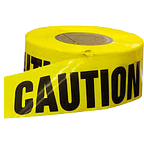School Shooting
What’s the Plan at Your Child’s School?
The horrific school shooting at a San Bernardino Elementary School on April 10, 2017 is a reminder to take a closer, insider look at your school’s emergency procedures such as lockdowns. Is your child’s school prepared to respond to such an attack?
School personnel are directly in charge of hundreds and sometimes thousands of children, acting in place of their parents or guardians. This is called in loco parentis. Not only do they work to educate students, but they must be prepared to respond to a wide range of hazards and threats schools can face, many of which require taking protective actions, such as lockdowns.
However, schools are all over the board with what they call lockdowns, and it is actually a very controversial issue. Why does it matter what we call lockdowns? When people are under extreme stress, like in emergencies, we can have diminished capacity to process complex information or accomplish straightforward tasks. Having simple and easy to understand lockdown terms and procedures help reduce confusion and empower students and staff to overcome those natural stress responses.
Nationally, there is no standardized terminology for school lockdowns. School leaders such as superintendents, administrators, and school safety personnel along with their local law enforcement agencies, determine what to call lockdowns. Why not just use the word “lockdown?” Schools need more than one type of lockdown protocol, they use varying degrees of lockdowns in response to different emergency situations, and they typically use distinct terms to identify each type of lockdown.
Some use numeric designations such as Level 1, 2, and 3 Lockdown. Others use the traffic signal color designations such as Code Yellow and Code Red Lockdown. Still others use terms such as Shelter-in-Place, Lock in, or Lock out to assign meaning to lockdowns. Many other terms are also used: soft lockdown and hard lockdown, partial lockdown and complete lockdown, preventive lockdown and emergency lockdown, to name just a few.
Emergency Response Partners: Schools and their emergency response partners such as law enforcement, 911 dispatch centers, fire fighters and emergency medical responders often interface during emergencies requiring lockdowns. While it is self-evident that school staff and students need to know and understand the school’s lockdown terminology, it is also beneficial for the school’s emergency response partners to have a clear understanding of the lockdown terminology used in the schools they serve.
In light of yet another tragic school shooting, this time at an elementary school in San Bernardino, Inside the Yellow Tape is featuring a well-researched paper on school lockdown procedures and terminology entitled, “Lockdown Terminology in K12 Schools: Why it is Okay to use Codes and Which Codes are Best.” In it, you will discover the very significant difference between a lockdown and a shelter-in-place and you will learn which lockdown codes are best at reducing confusion to help school students and staff members respond quickly and effectively during emergencies.
After reading the report, you might want to do some investigation, and look Inside the Yellow Tape at your child’s school to see where they are in terms of lockdown preparedness.
